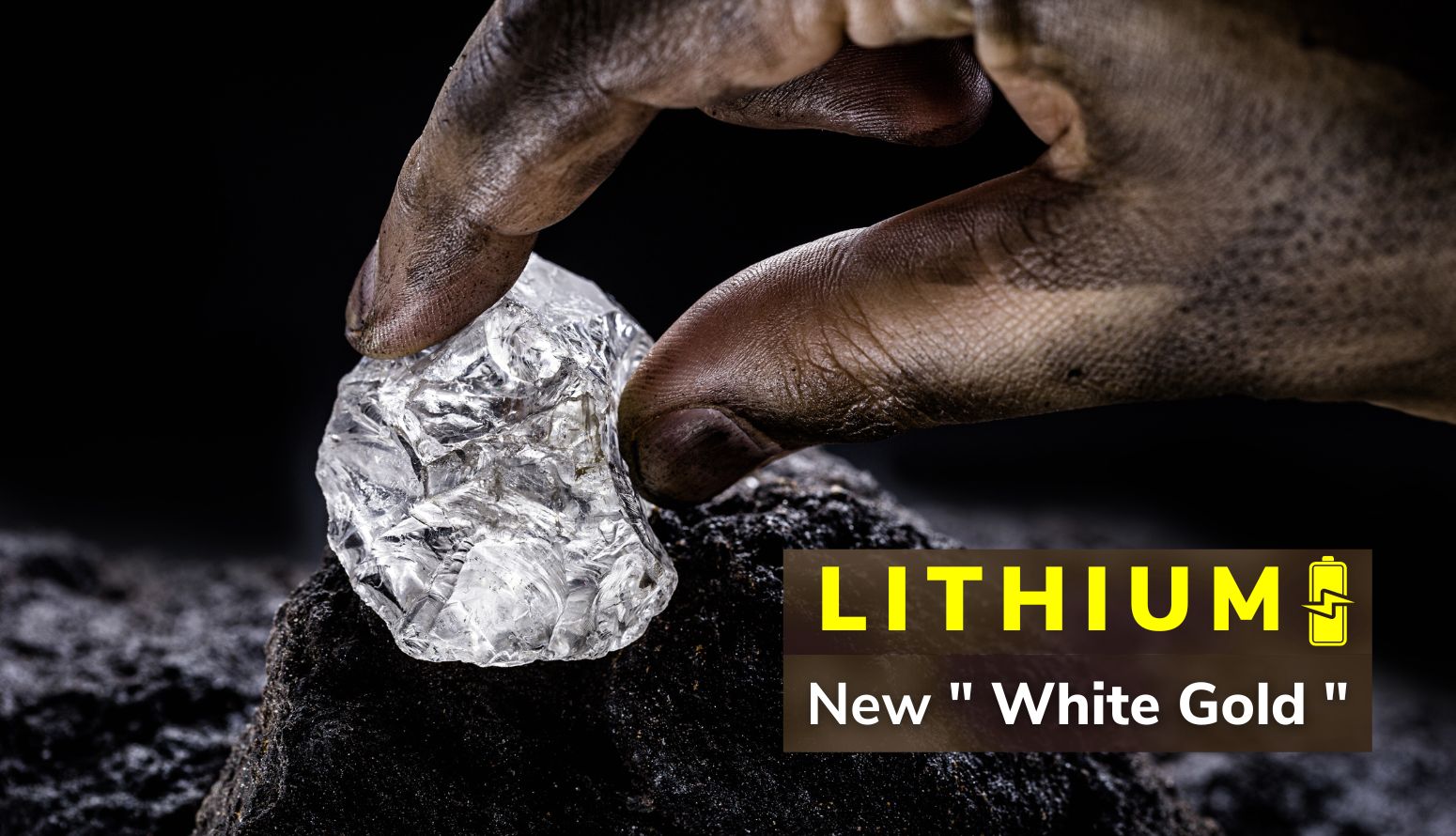
Lithium is called the new “white gold” because of its market value and its silver color. Here’s Why Lithium Is The New “White Gold”?
Electric vehicles are on the rise to capture the roads and make new strides in the direction of sustainability. But do you know the main elixir that drives electric cars on the streets is none other than Lithium? You must have probably heard about the phase Li-ion batteries when reading about Electric cars.
Before we relate Lithium to electric vehicles, it is essential to know some characteristics of Lithium that make it suitable for electric vehicles.
Li-Ion Batteries have excellent high-temperature performance, a high power-to-weight ratio, great energy efficiency, and minimal self-discharge. Lithium-ion parts can often be recycled. Nickel Manganese Cobalt and Lithium Iron Phosphate are two of the more popular lithium-ion chemistries.
Therefore, it is termed as new white gold due to its prices and the value it generates.
Table of Contents
What is a Lithium-ion battery?
However, at its core, lithium-ion refers to a battery based on charge and discharge processes between a lithiated metal oxide cathode and a graphite anode.
Lithium-ion can refer to a wide range of chemistries that helps an electric vehicle run on the roads. During the discharge and recharging of a Li-ion battery, lithium ions go from the negative electrode through an electrolyte to the positive electrode.
The positive electrode in lithium-ion batteries is made of an intercalated lithium compound, while the negative electrode is commonly made of graphite.
What is India’s stand on Li-ion batteries?
The government of India has tried to incentivize the battery manufacturing industry by approving a production-linked incentive scheme of Rs. 18,000 crores to encourage the production, export, and storage of lithium-ion batteries, which are crucial for the creation of electric vehicles.
Through this program, the Union government hopes to establish a production capacity for Advanced Chemistry Cells (ACC) of 50-gigawatt hours (GWh) and a 5 GWh capacity for “Niche” ACC. Lithium-ion cells are essentially what ACCs are.
Within five years, manufacturers would have to pledge to establish a manufacturing facility with a minimum capacity of 5GWh and guarantee a minimum 60% local value addition. The battery or cell maker will then be required to demonstrate a minimum investment of 225 crores per GWh within two years and grow it to 60% domestic value addition within five years, in addition to achieving a domestic value addition of 25%. With the help of this scheme, the government
expects to save between 2 and 2.5 trillion yen due to a decrease in oil imports as a result of rising electric vehicle use. The program is anticipated to hasten the adoption of zero-emission cars.
Lithium Reserve in India
India’s Lithium reserves are on a tiny area of land recently studied in Southern Karnataka’s Mandya district and have been assessed to be 14,100 tonnes by scientists at the Atomic Minerals Directorate (under India’s Atomic Energy Commission).
Also, it was the first lithium deposit site ever discovered in India. Meanwhile, there is experimental work being done to see if lithium can be extracted from the brine pools in Rajasthan and Gujarat as well as the mica belts in Odisha and Chhattisgarh.
The different alternatives to Lithium-ion batteries?
Lead-acid batteries:
Lead-acid batteries have a substantially shorter lifespan than nickel-metal hydride batteries, which are also more secure and abuse resistant. These batteries are frequently found in hybrid cars.
The biggest problems with nickel-metal hydride batteries are their high price, high self-discharge, significant heat generation at high temperatures, and the requirement to manage hydrogen loss.
Acid Batteries:
High-power lead-acid batteries are possible to develop, and they are also affordable, reliable, safe, and safe. However, their employment is limited by their low specific energy, poor cold-temperature performance, and short calendar and cycle lives.
Although sophisticated high-power lead-acid batteries are being developed, they are only used as accessory loads and are currently on the market in electric-drive vehicles.
Ultracapacitors:
In a polarized liquid sandwiched between an electrode and an electrolyte, ultracapacitors store energy. The liquid’s surface area grows along with its ability to store energy.
Vehicles with ultracapacitors may accelerate more quickly, climb hills more easily, and recover brake energy. Because they assist electrochemical batteries in balancing load power, they may also be helpful as secondary energy storage systems in electric-drive cars.
Road Ahead
India can learn a lot of lessons from China over the past ten years, China has aggressively developed in the EV battery market, capturing every link in the supply chain to become the industry leader in e-mobility.
Due to significant R&D expenditures, supportive government regulations, foreign direct investment inflows, and aggressive acquisition of raw material resources globally, China is currently the market leader for next-generation EVs.









Very useful information